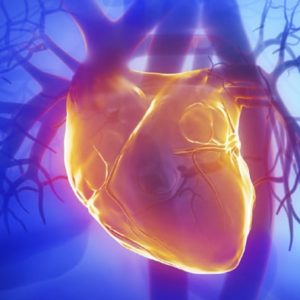 Heart disease is a general term used to describe a range of disorders that affect the heart and, in some cases, the blood vessels.
Heart disease is a general term used to describe a range of disorders that affect the heart and, in some cases, the blood vessels.
Many people use the term “heart disease” interchangeably with “cardiovascular disease”, a phrase that usually refers to conditions involving narrowed or blocked blood vessels that can cause a heart attack, stroke or angina (chest pain).
There are many different types of heart disease, here’s a brief explanation of the more common types of heart diseases.
Aneurysms
When an artery is damaged and loses its elasticity and strength, it can develop a bulge called an aneurysm. The force of blood pushing against the weakened wall can cause the aneurysm to rupture, causing bleeding into and along the artery wall. A ruptured aneurysm is often fatal.
Angina
This condition is marked by a feeling of pressure in the chest, shortness of breath, and sometimes sweating. Angina is a symptom of myocardial ischemia usually caused by coronary artheroslerosis (hardening of the arteries; see below).
Arrhythmia
Any abnormal or disturbed heart rhythm is referred to as arrhythmia. This can include abnormally rapid (tachycardia), slow (bradycardia), or irregular rhythms.
Atherosclerosis
This condition is commonly referred to as “hardening of the arteries” and is caused by accumulation of cholesterol, fats, and other substances in the arteries. The buildup causes the arteries to become narrow and less flexible. Although loss of elasticity is a part of the aging process, factors such as smoking, diabetes, poor nutrition and high blood pressure are also risk factors for atherosclerosis.
Cardiomyopathy
Disease of the heart muscle. There are several types, including dilated cardiomyopathy and hypertrophic cardiomyopathy, which are explained below.
Congenital heart disease
These conditions develop before birth. The most common types are obstruction of blood flow in the heart or vessels around the heart, an irregular pattern of blood flow through the heart, and various structural problems such as having just one ventricle instead of two. Approximately 36,000 infants are born with congenital heart disease each year.
Congestive heart failure
If the heart is too damaged or weak to regulate blood flow properly, the blood can become congested in different locations (e.g., feet, lungs, legs) and cause swelling, as well as shortness of breath, paleness. and coolness in the legs and arms. These are symptoms of congestive heart failure.
Coronary artery disease
This is the number one cause of heart attack. Coronary artery disease is a condition in which the heart muscle cannot get enough oxygen and blood. In addition to heart attack, coronary artery disease can lead to angina and, in severe cases, sudden death.
Diastolic dysfunction
This is a type of heart failure in which the relaxation portion of the beat (diastolic) is abnormal. This abnormality prohibits the blood from flowing freely between the ventricles and sends it up into the arteries and veins. This action can cause swelling and increased pressure in the blood vessels of the lungs (pulmonary congestion) and/or in the blood vessels that enter the heart (systemic congestion).
Dilated cardiomyopathy
If you have dilated cardiomyopathy, your heart muscles have become so weak and your heart chambers are so dilated that too much blood is released with every beat. This condition can be caused by coronary artery disease, myocarditis, or excessive alcohol use, or the reasons can be unknown.
Endocarditis
A disease of the heart valves, endocarditis occurs when the endocardium (the membrane that lines the inside of the heart valves) becomes infected. Most cases develop as the result of surgery.
High blood pressure
The force of blood on the artery walls as it is pumped through the body is blood pressure. If the flow is obstructed, the heart must pump more rapidly or with more force to push the blood through the vessels, causing blood pressure levels to rise. High blood pressure (hypertension) can lead to an aneurysm, an enlarged heart, or heart failure (see above).
Hypertrophic cardiomyopathy
When the heart muscle becomes so thick that it restricts the amount of blood the ventricles can hold and pump, you have hypertrophic cardiomyopathy. This condition can result in sudden death and arrhythmia.
Mitral valve prolapse
The Mitral valve makes sure the blood flows toward the body during each beat. Mitral valve prolapse is an abnormality in which the valve goes backward as the heart contracts. The condition can progress gradually and the cause is unknown. In severe cases it can lead to congestive heart failure.
Myocardial ischemia
Sometimes the blood supply to the myocardium (the muscular wall of the heart) is very low, which causes the heart muscle to function abnormally. An inadequate supply of blood is called ischemia. Because the heart muscle must work harder to try to get enough blood and oxygen, it can cause chest pain, shortness of breath and fatigue. Angina is a symptom of myocardial ischemia.
Myocarditis
An inflammation of the heart muscle (myocardium) is myocarditis. It is usually caused by a virus and characterized by fever, joint pain, chest pain, and an abnormally rapid heart rate.
Valve disease
Any one or more of the four valves in the heart (mitral and aortic on the left side; tricuspid and pulmonary on the right) can become diseased. Diseased valves typically obstruct blood flow, become stiff and do not open easily, or fail to close properly, allowing blood to leak. A stiff (stenotic) valve reduces blood flow, causing the blood behind it to accumulate. This backup leads to symptoms of congestive heart failure and angina. Valves that fail to close properly allow blood to leak back in the wrong direction, which may cause the heart chambers to enlarge. Weakened or damaged valves are susceptible to infections, called endocarditis (see above).









